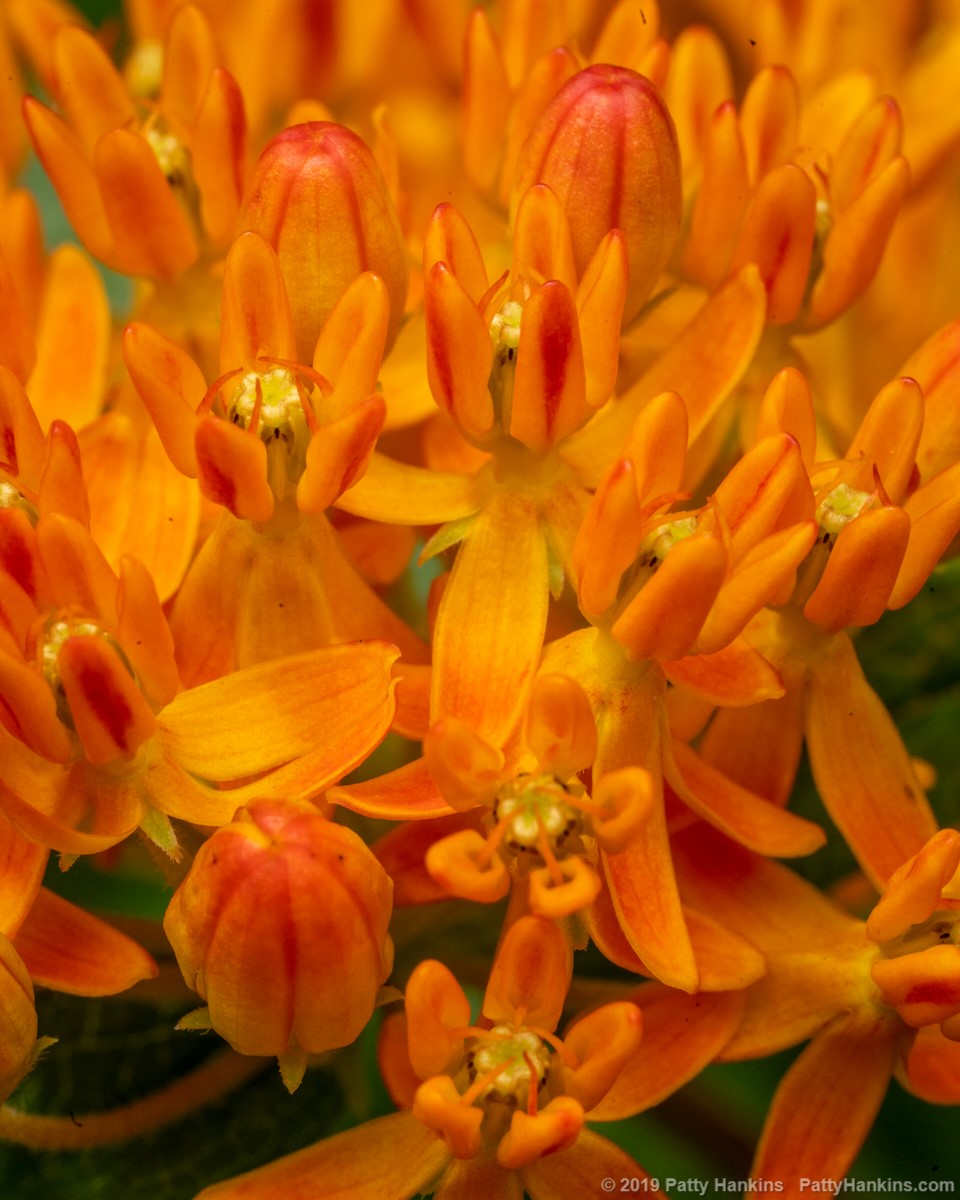
by hankinslawrenceimages | Aug 12, 2019 | Apocynaceae Family, Wildflowers
Earlier this summer I had a chance to photograph some wonderful Butterfly Weed (Asclepias tuberosa) at Mt Cuba Center in Delaware. They had it growing in both their formal gardens and in multiple places in the more natural areas of the property. Every where I saw the butterfly weed, I saw butterflies! It is a great host plant for those of us in the Middle-Atlantic region who want to attract pollinators to our gardens. I planted several earlier this year and already I’m seeing butterflies visiting my garden.
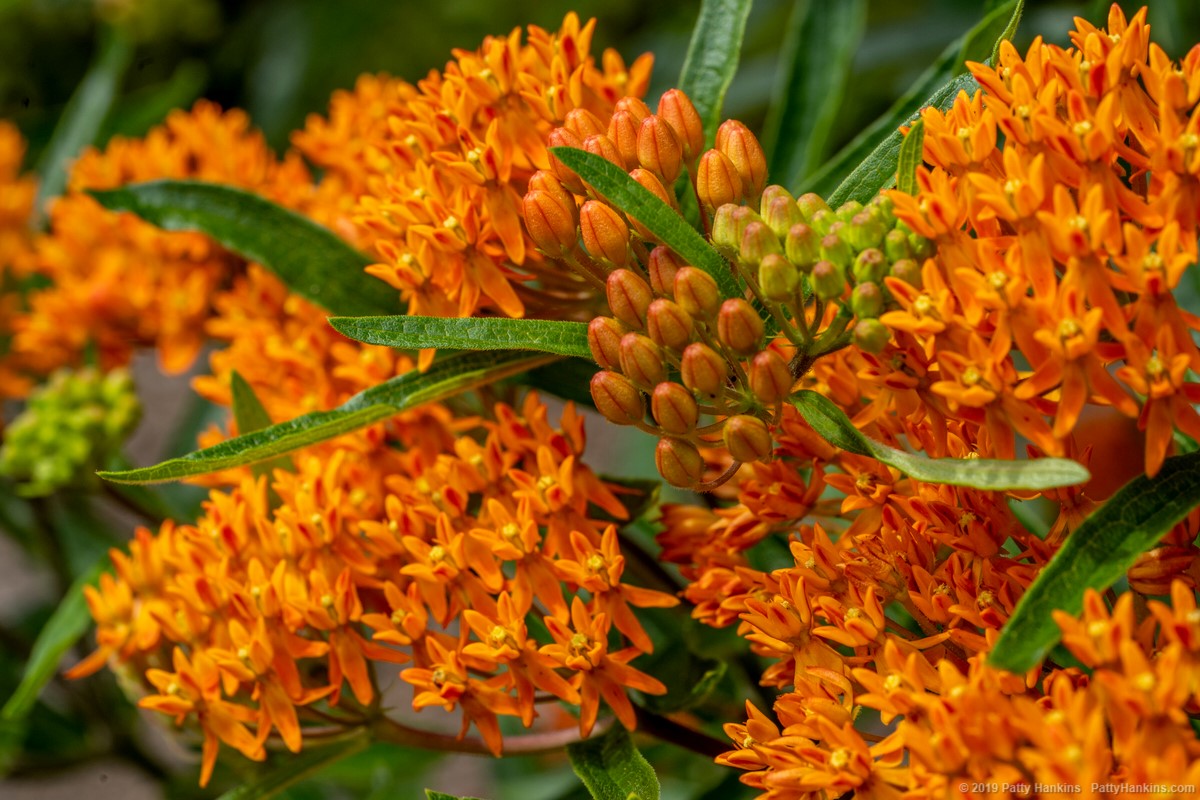
Butterfly Weed – Asclepias Tuberosa © 2019 Patty Hankins
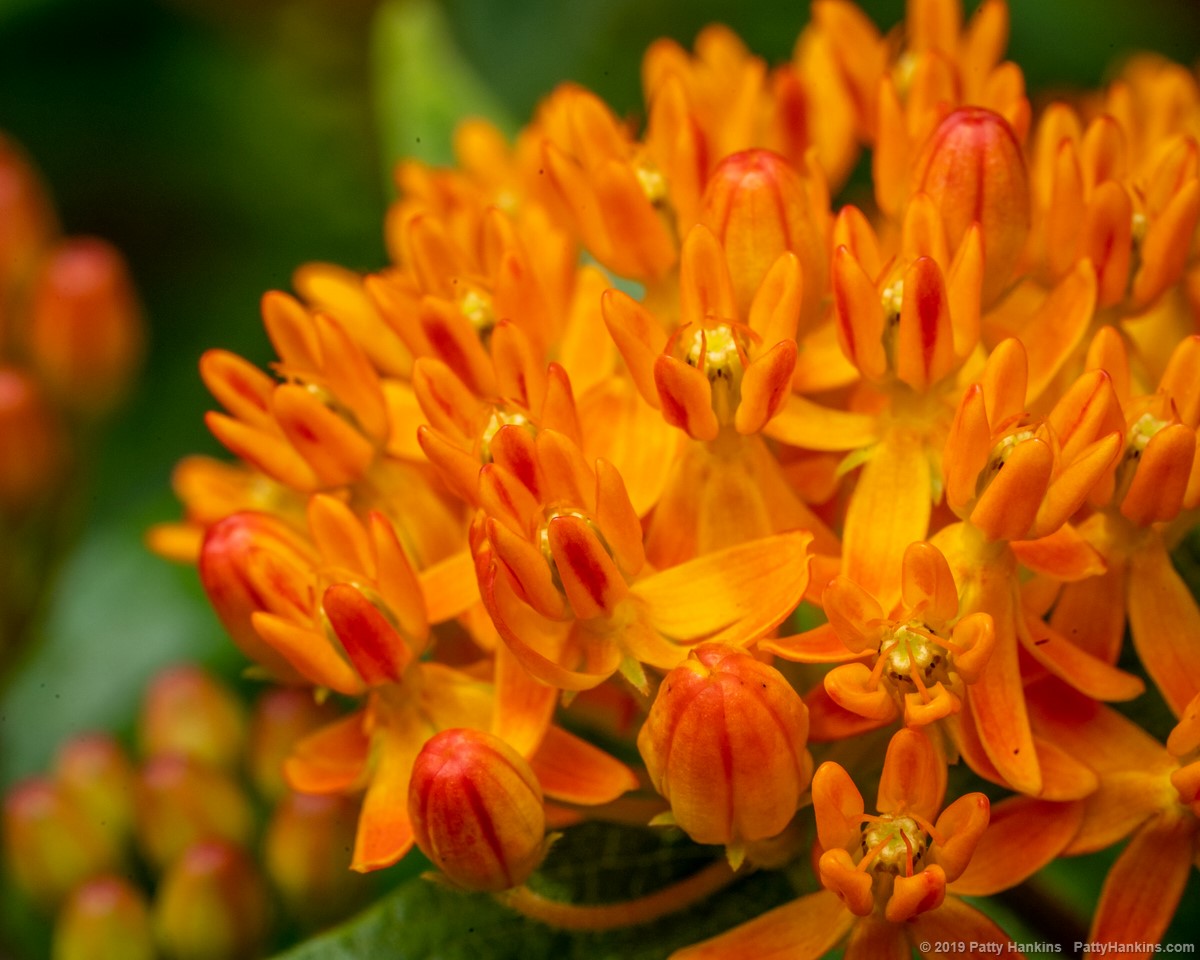
Butterfly Weed – Asclepias Tuberosa © 2019 Patty Hankins
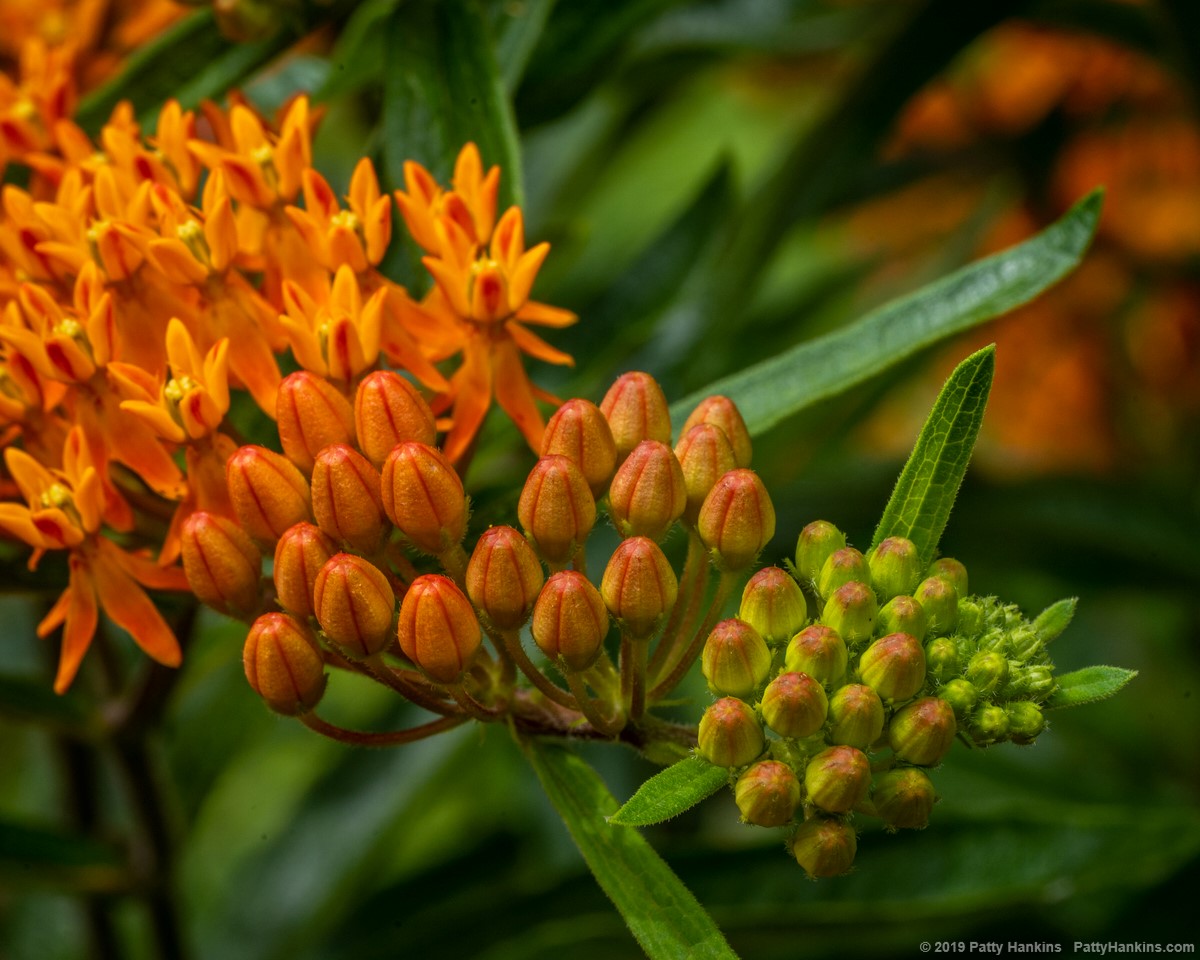
Butterfly Weed – Asclepias Tuberosa © 2019 Patty Hankins
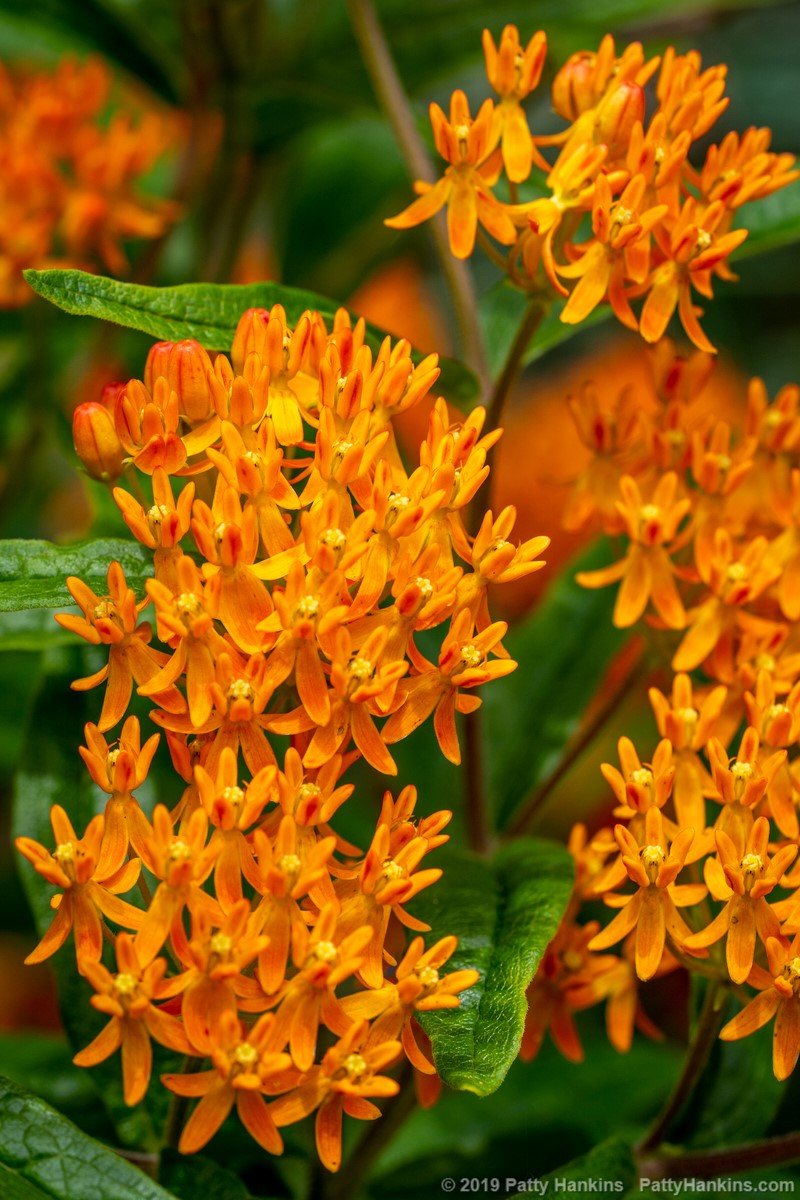
Butterfly Weed – Asclepias Tuberosa © 2019 Patty Hankins
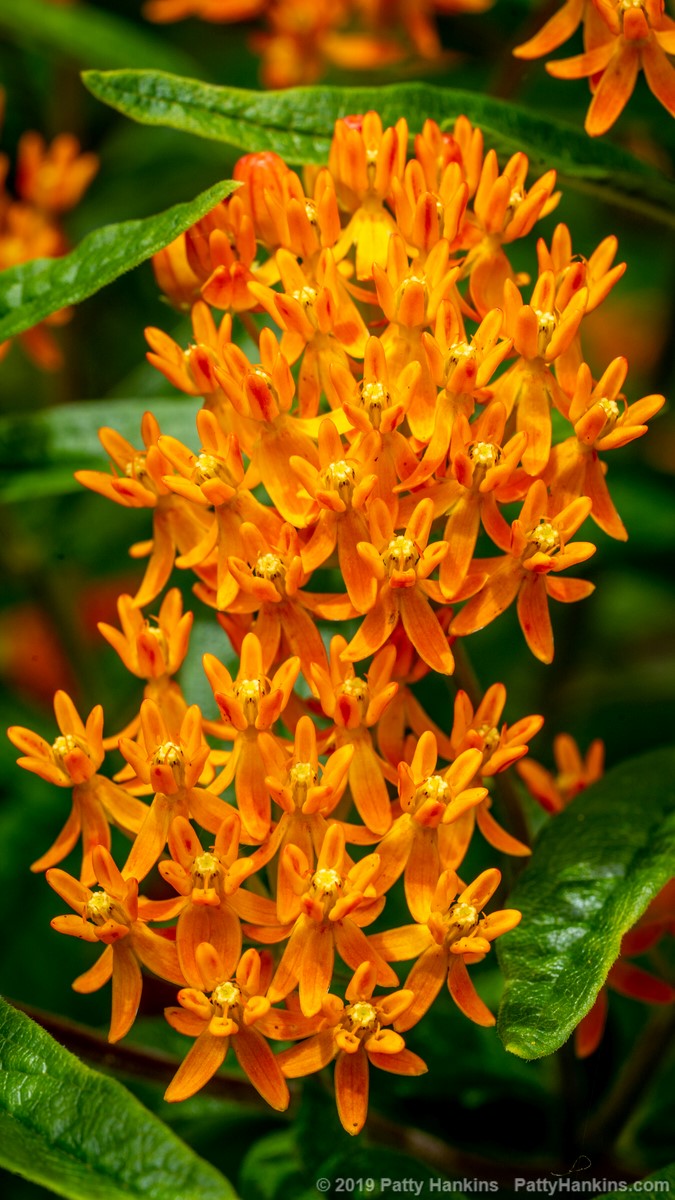
Butterfly Weed – Asclepias Tuberosa © 2019 Patty Hankins

Butterfly Weed – Asclepias Tuberosa © 2019 Patty Hankins
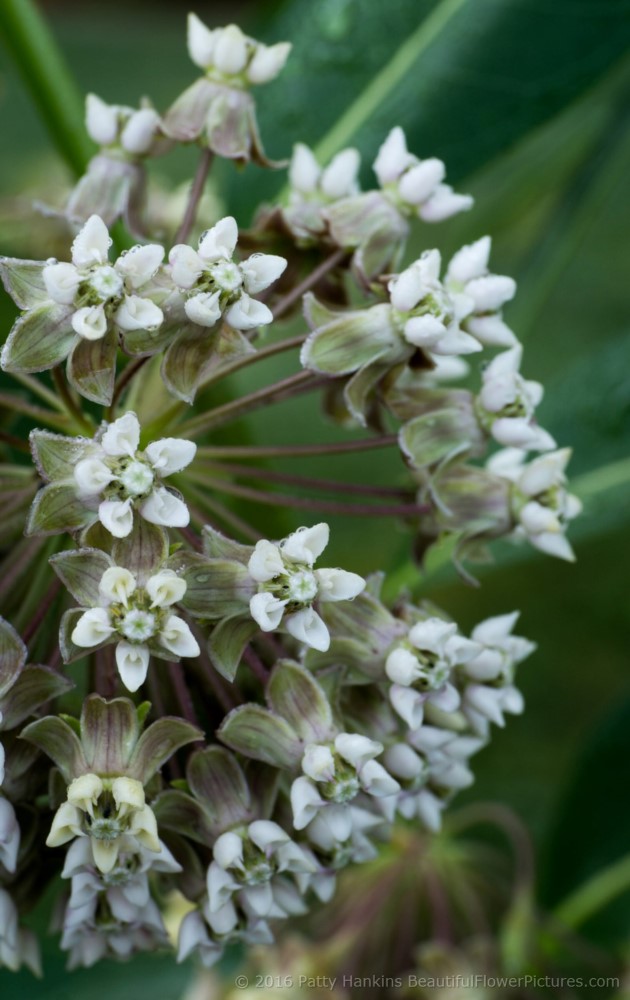
by hankinslawrenceimages | Jul 27, 2016 | Apiaceae Family, Apocynaceae Family, Malvaceae Family, Zingiberaceae
I’ve made a couple of visits to Green Spring Gardens recently and found some wonderful flowers to photograph. I thought I’d share some of those photo with you today.
Common Milkweed – asclepias syriaca

Common Milkweed – asclpeias syriaca © 2016 Patty Hankins

Common Milkweed – asclpeias syriaca © 2016 Patty Hankins
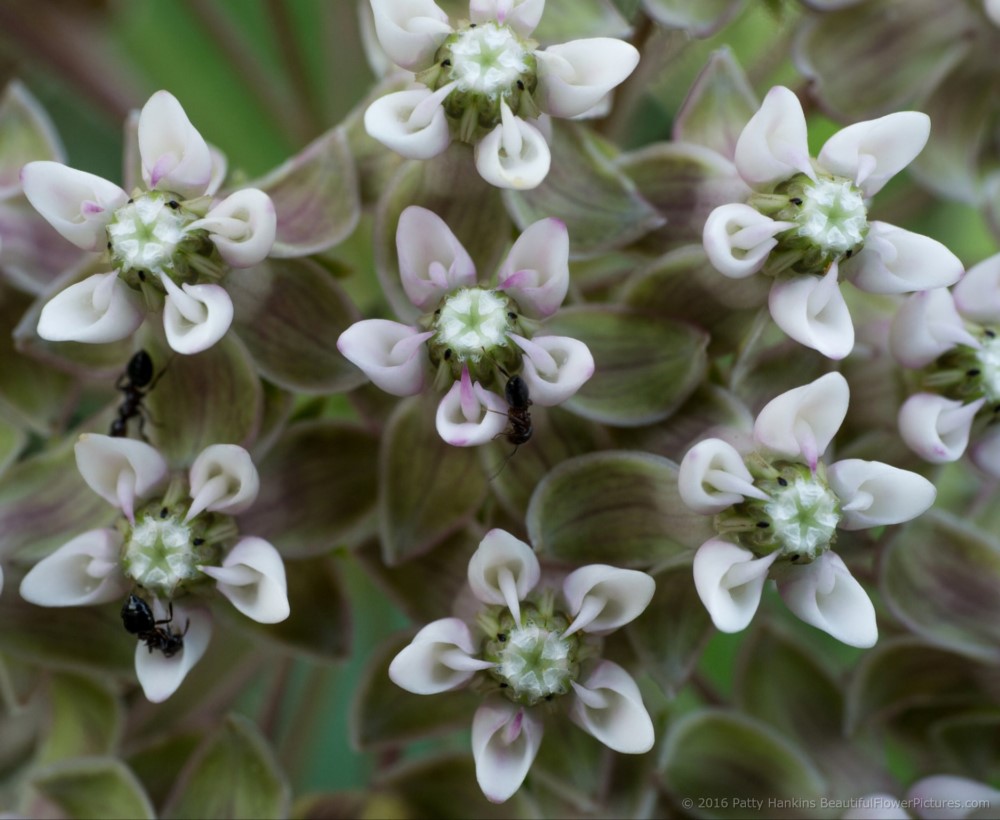
Common Milkweed – asclpeias syriaca © 2016 Patty Hankins
Swamp Milkweed – asclepias incarnata
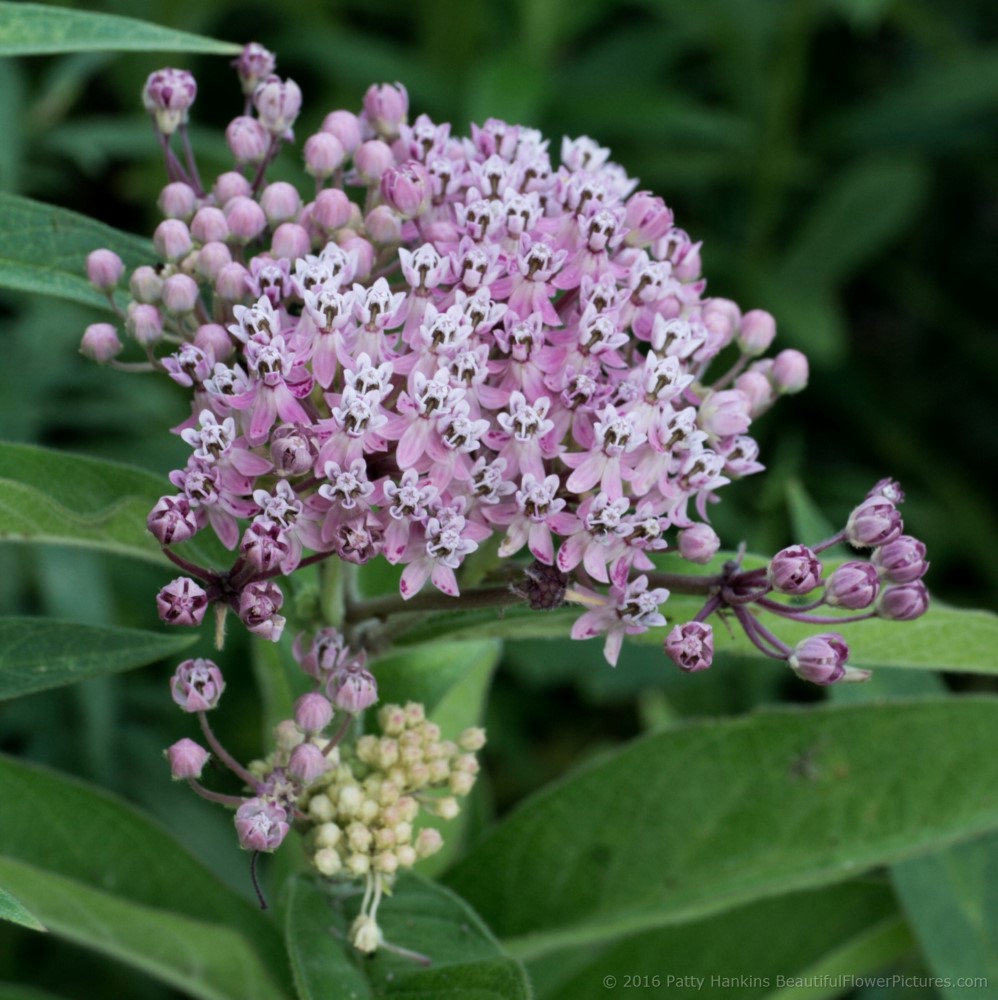
Swamp Milkweed – asclpeias incarta © 2016 Patty Hankins
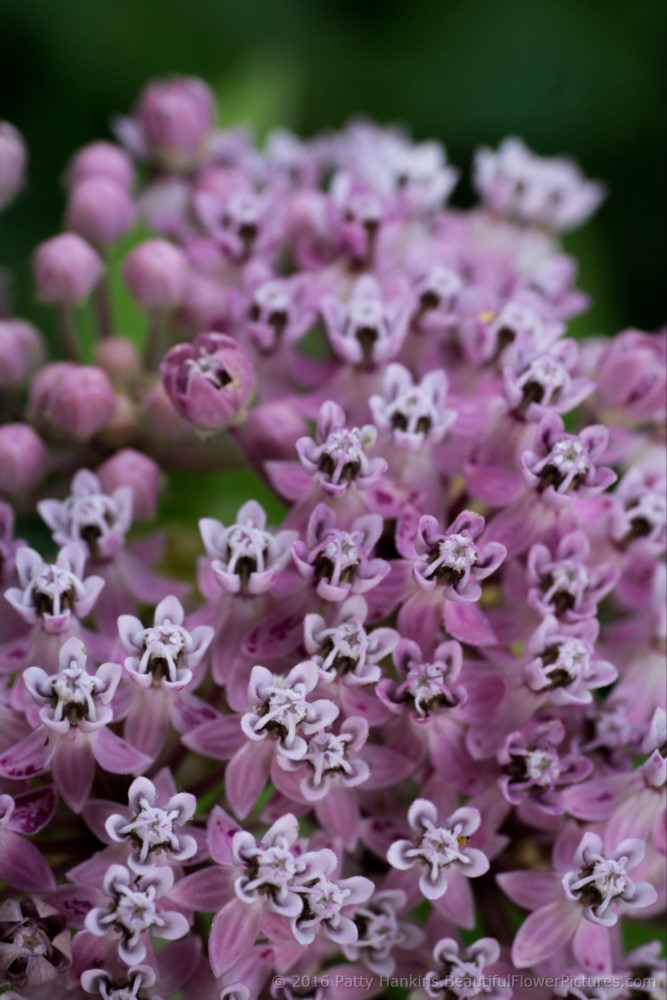
Swamp Milkweed – asclpeias incarta © 2016 Patty HankinsSwamp Milkweed – asclpeias incarta © 2016 Patty Hankins
A member of the Apiaceae family – possibly Queen Anne’s Lace but I wasn’t sure
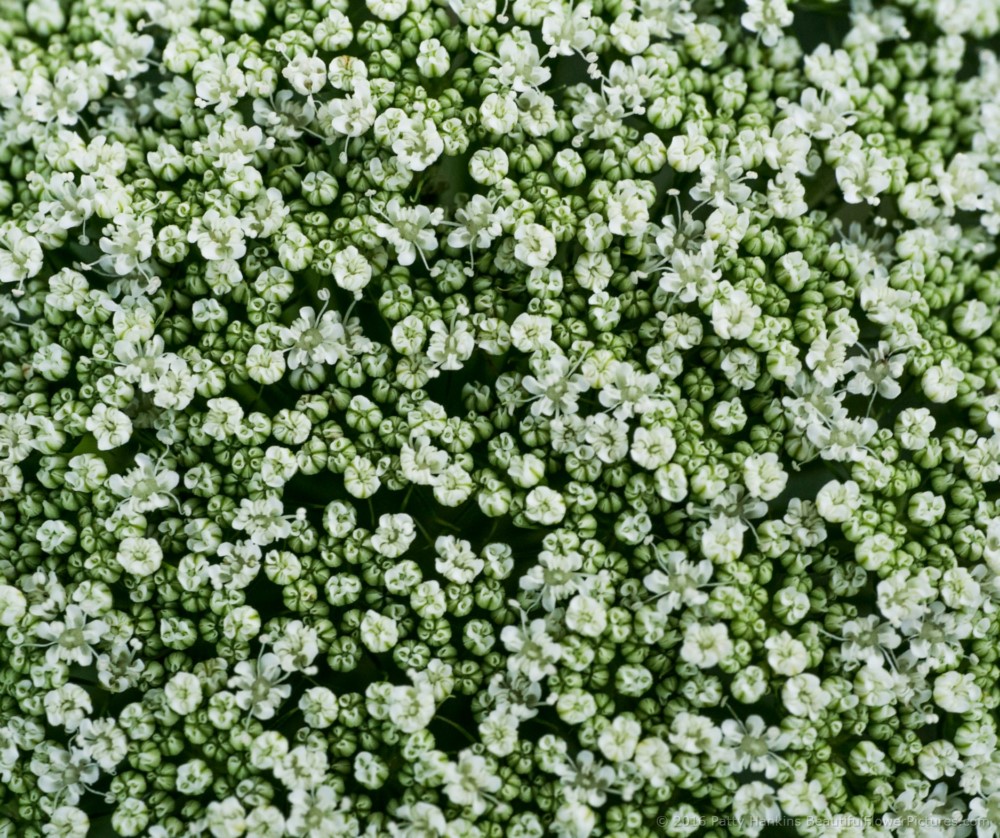
Member of the Apiaceae family © 2016 Patty Hankins
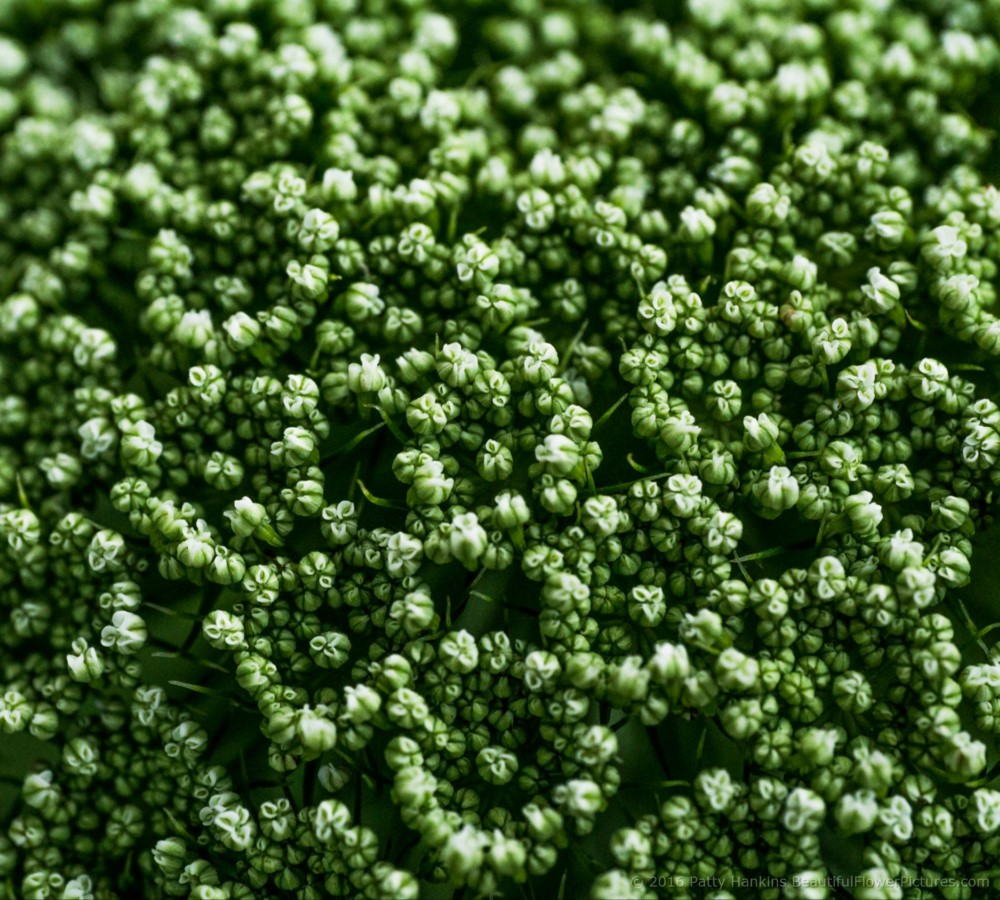
Member of the Apiaceae family © 2016 Patty Hankins
Turmeric
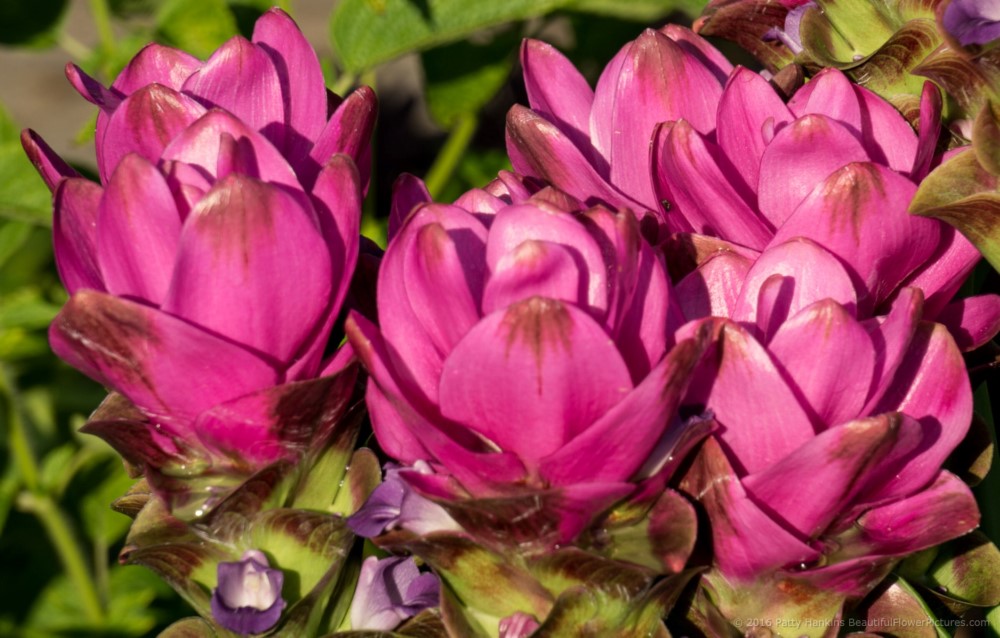
Turmeric © 2016 Patty Hankins
And a red and white Hibiscus blossom
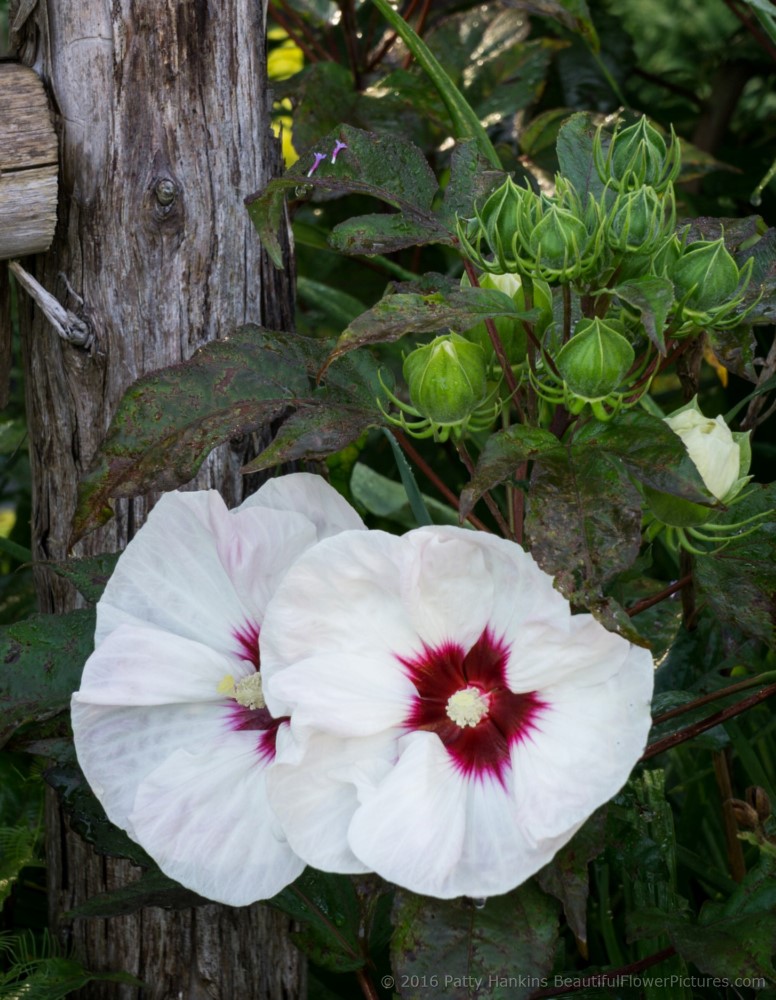
Hibiscus © 2016 Patty Hankins
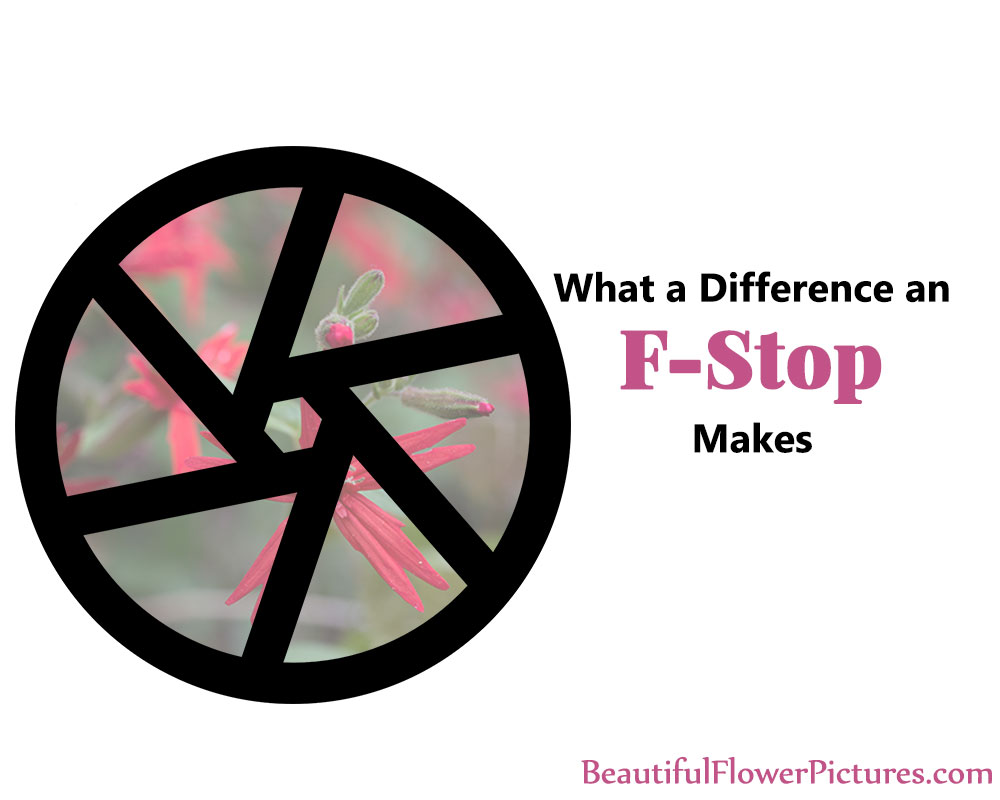
by hankinslawrenceimages | Jun 5, 2015 | Apocynaceae Family, Flowers, Photo Tips
I recently got an email from a novice photographer commenting on how they liked that in some of my photos just one flower is in focus – and in others – everything is in focus. And they wanted to know how I got my photos to look like that. Did they need Photoshop or was there another photo editing software package that they could use?
I replied that I set my camera in Aperture Priority, and chose my F-stop based on how I wanted my photo to look – and what part of the photo I wanted to be in sharp focus.
The response I got did surprise me – they replied that it sounded challenging to do it in the field – wouldn’t it really be easier to do it in software?
At least for me, the answer to that question is NO. I would much rather think about what I want my final photo to look like when I’m in the field and do my best to capture it on my camera than to try to fix it in Photoshop later.
When I’m photographing flowers, I tend to set my camera in Aperture Priority Mode. This allows me to choose my F-Stop which lets me control the depth of field – or how much of the photo is in sharp focus.
The lower the number of the F-Stop (such as f 2.8) the wider open the aperture in the lens is – and the smaller the area in sharp focus is. Similarly – the larger the number of the F-Stop (such as F 32), the aperture opening in the lens will be smaller and the area in sharp focus will be much larger.
As just words – that really doesn’t make much sense. It’s one of these things that is much easier to show you than to explain it.
Where the F-Stop numbers came from was back in the day of manual lenses – there were blades that opened and closed to control the amount of light. The aperture or opening was wide open at F 2.8 and closed down at F 32. These photos of one of Bill’s lenses for his large format camera shows the lens blades wide open and closed down.


And to show how changing the F-Stop affects the look of your photo – I took a series of 8 photos of butterfly weed at F-Stops ranging from F 2.8 to F 32.
The first photo was taken at F 2.8 – a wide open aperture with a shallow depth of field. As you can see – just a few of the blossoms are in sharp focus and the rest of the photo is blurred.
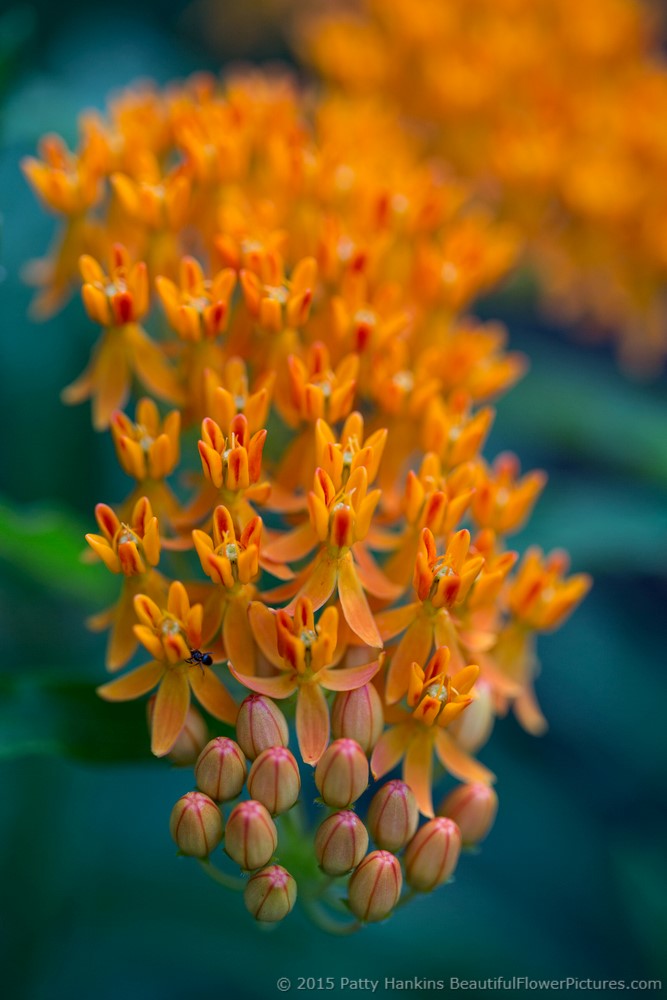
F 2.8
As you look through the next several photos – notice how many of the blossoms are in sharp focus and how much of the background you can clearly see.
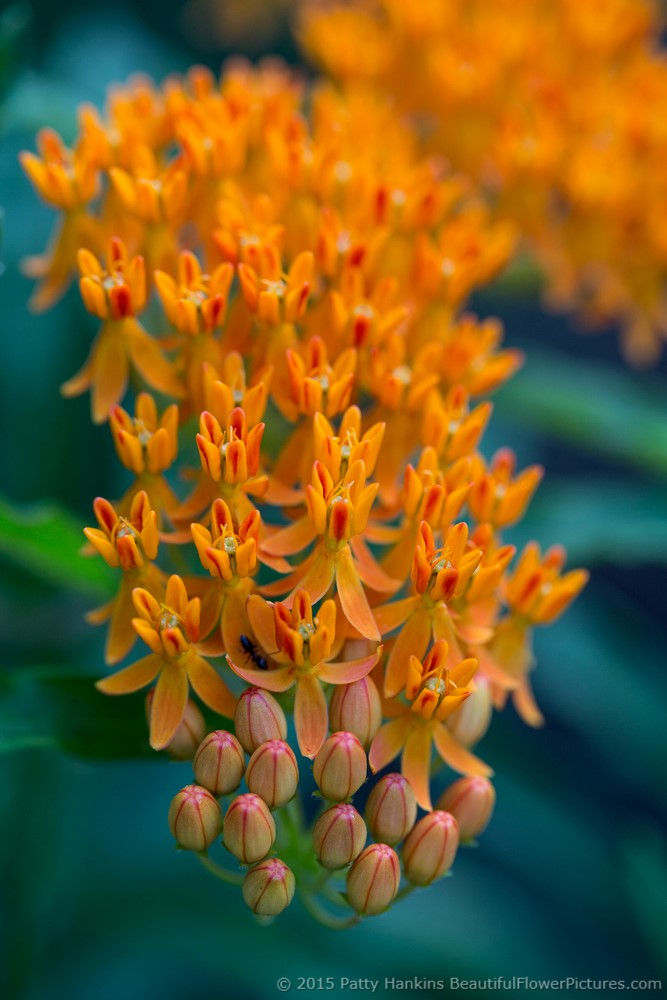
F 4
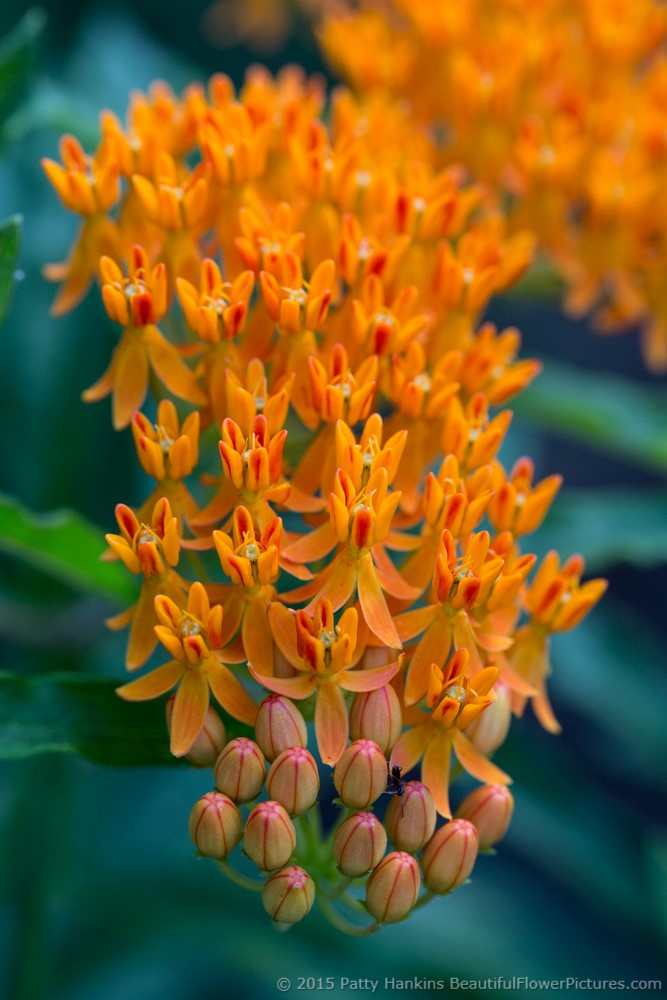
F 5.6
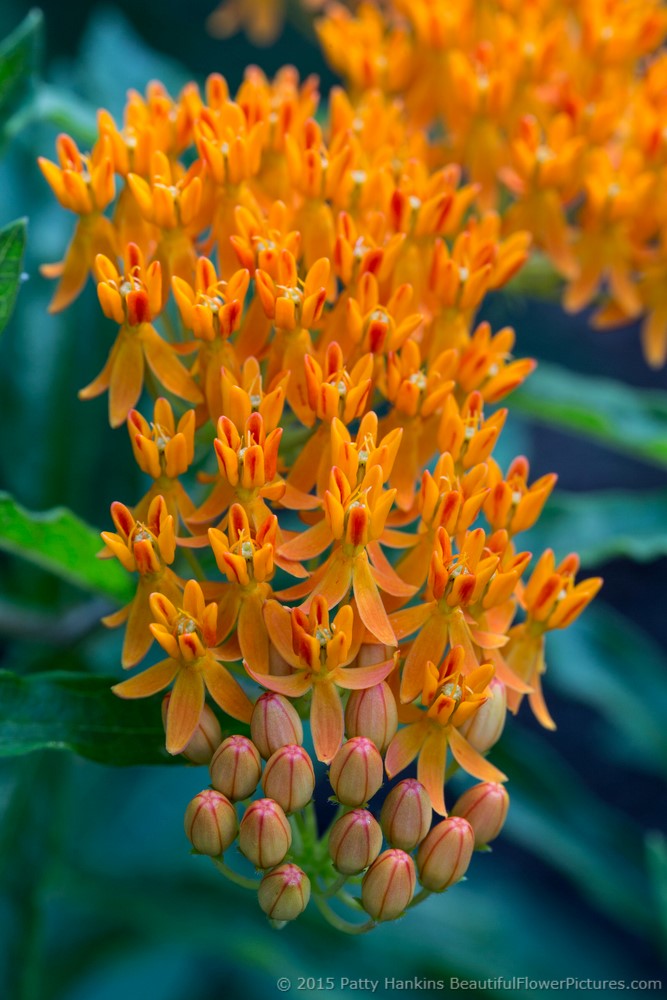
F 8
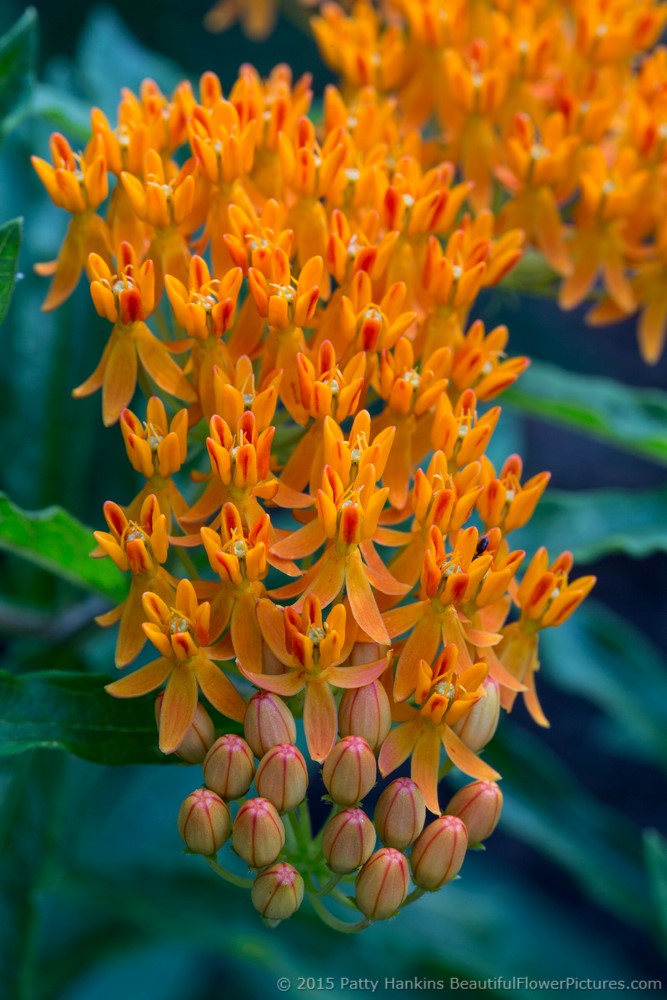
F 11
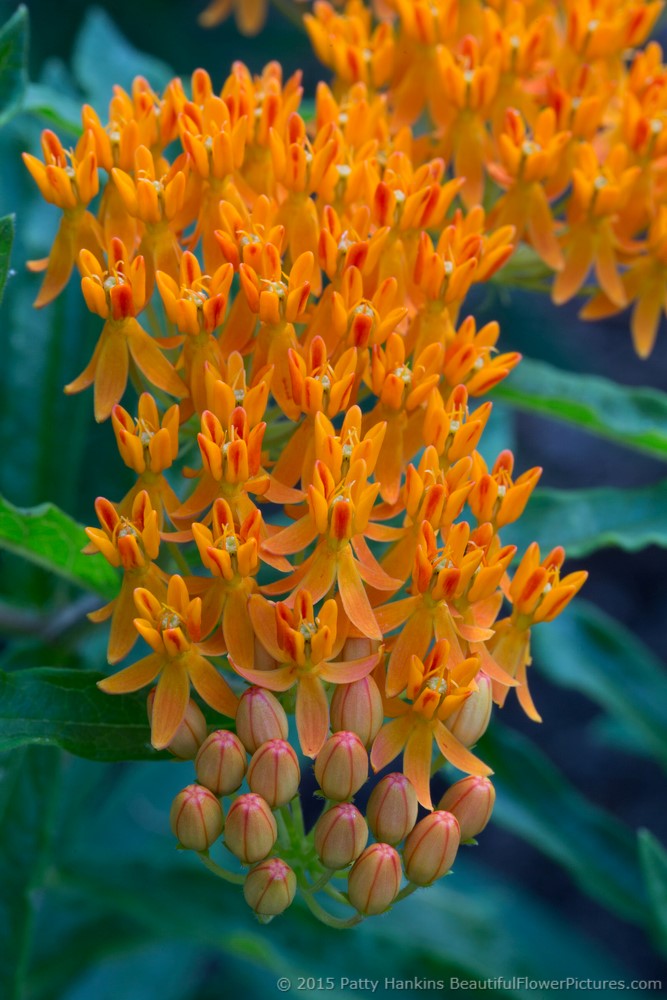
F 16
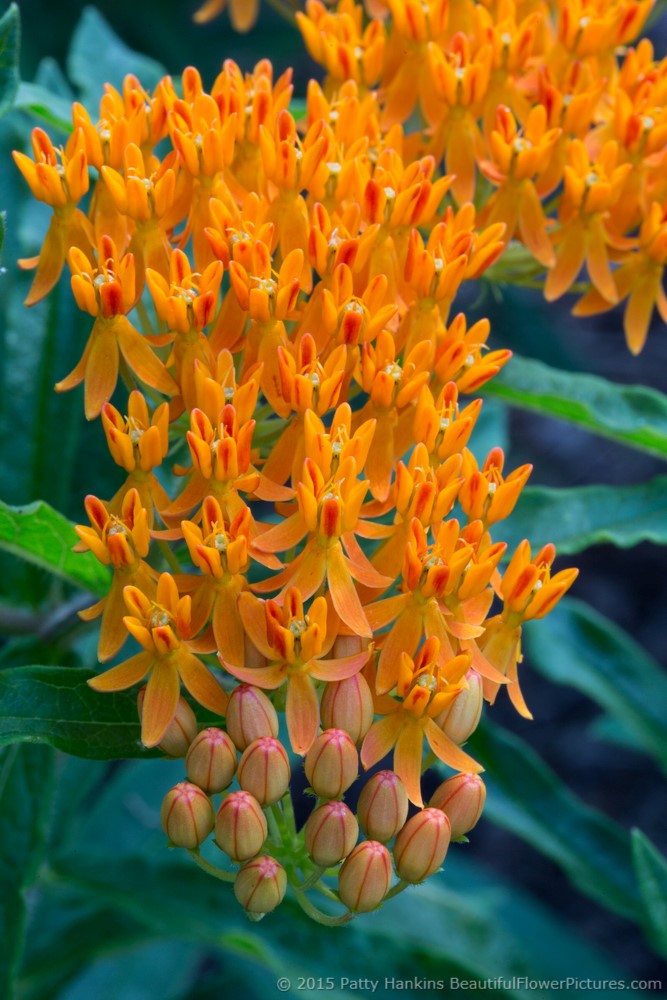
F 22
The last photo was taken at F 32 – a very narrow aperture with a large depth of field. Just about the entire photo is in sharp focus – everything from all the blossoms to the leaves in the background are clearly defined.
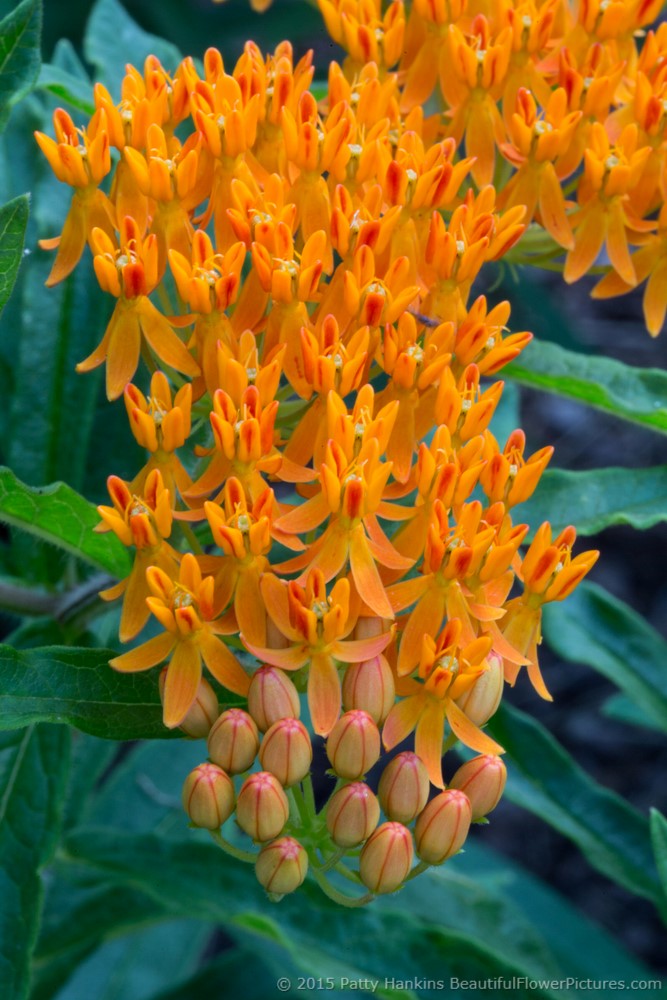
F 32
And what’s great is that you get to decide how much of your photo will be in sharp focus and what your final photo will look like – simply by choosing the F-Stop that lets you create the photo you want to share with the world.
I’d appreciate it if you’d let me know if you found this article helpful and if you’d like me to include more articles like this in future newsletters. I’d love to help you create photos you are proud to share with the camera gear you already have.
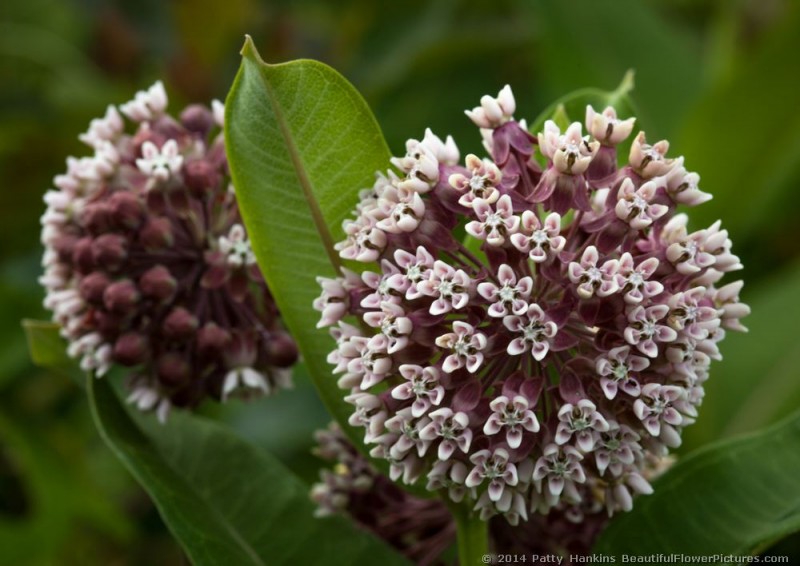
by hankinslawrenceimages | Oct 22, 2014 | Apocynaceae Family, Flowers, Wildflowers
In the past few years – more and more people seem to be becoming aware of the importance of native plants and their role in pollination of other plants. So it’s wonderful to see more and more native plants available at local garden centers and nurseries. Two of the plants I’ve been seeing more frequently are Common Milkweed (Asclepias syariaca) and Butterfly Weed ( asclepias tuberosa).
One of the reasons the milkweeds and butterfly weeds are becoming more popular is people are concerned about the declining populations of monarch butterflies. While populations of other species of pollinators are also facing catastrophic declines, the plight of the monarch butterflies have caught people’s imaginations.
As far as I’m concerned – anything that gets people to plant more native plants in their gardens is a good thing. Native plants tend to more drought-resistant, grow abundantly without the need for chemical fertilizers and provide food for pollinators. Most of the plants in my gardens are native plants – and that’s all I add to the garden these days. This year I had two species of milkweed and butterfly weed in my garden. While I never did see any monarch butterflies in my garden this summer – I certainly did see many other butterflies, bees and other pollinators hanging out around them.
Here are some of my photos of common milkweed and butterfly weed I’ve recently photographed.
Common Milkweed – asclepias syariaca
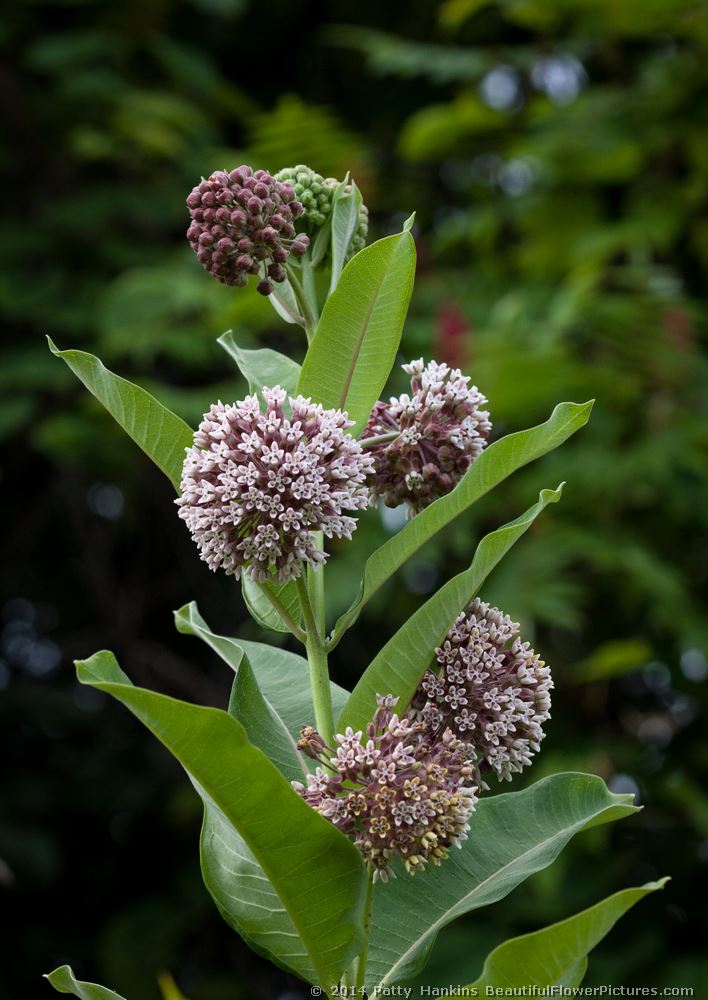
Common Milkweed © 2014 Patty Hankins

Common Milkweed © 2014 Patty Hankins
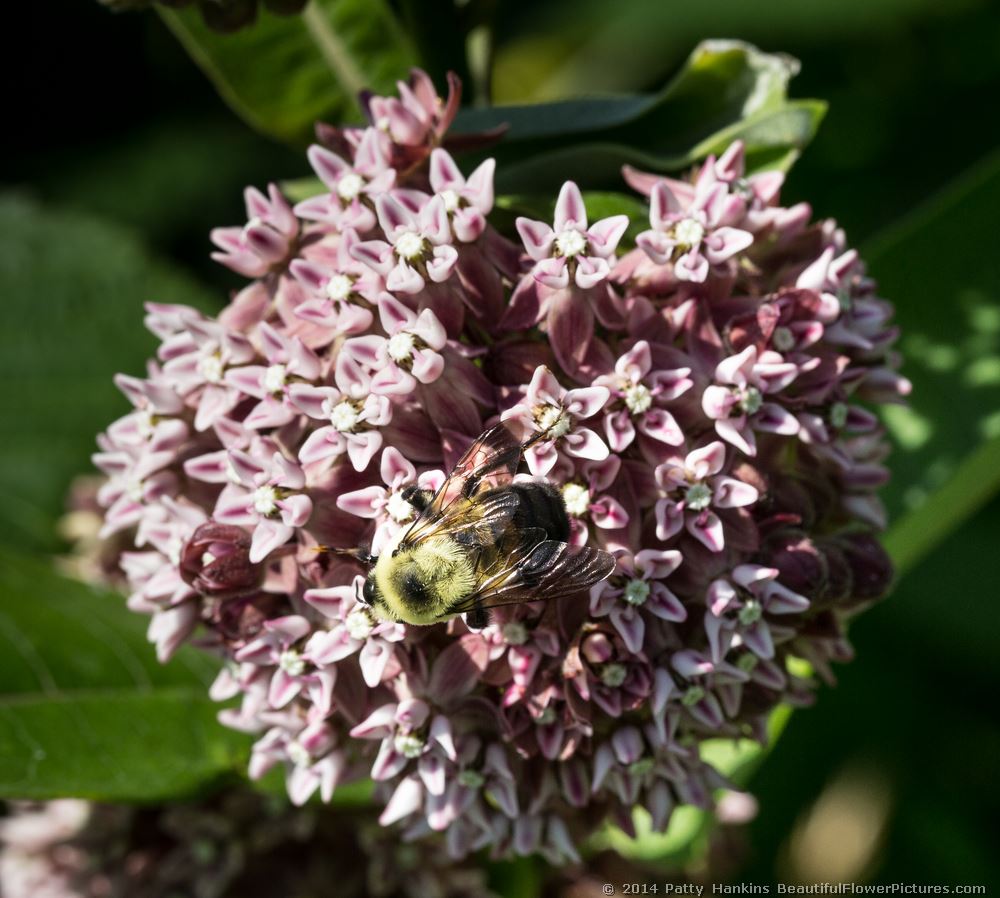
Common Milkweed © 2014 Patty Hankins
Butterfly Weed – asclepias tuberosa
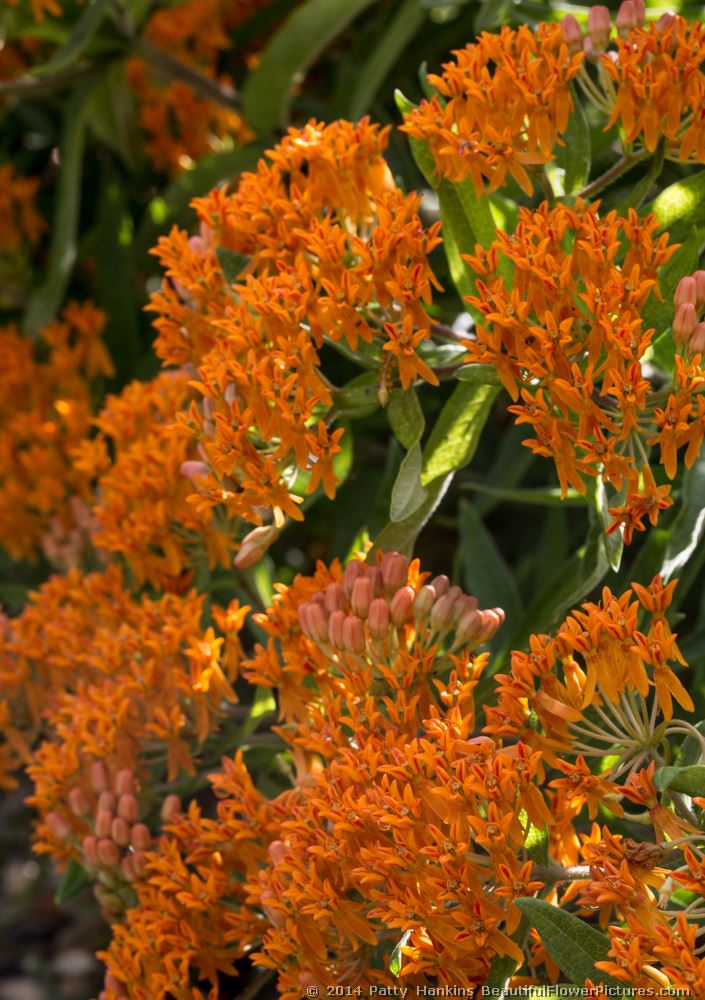
Butterfly Weed © 2014 Patty Hankins
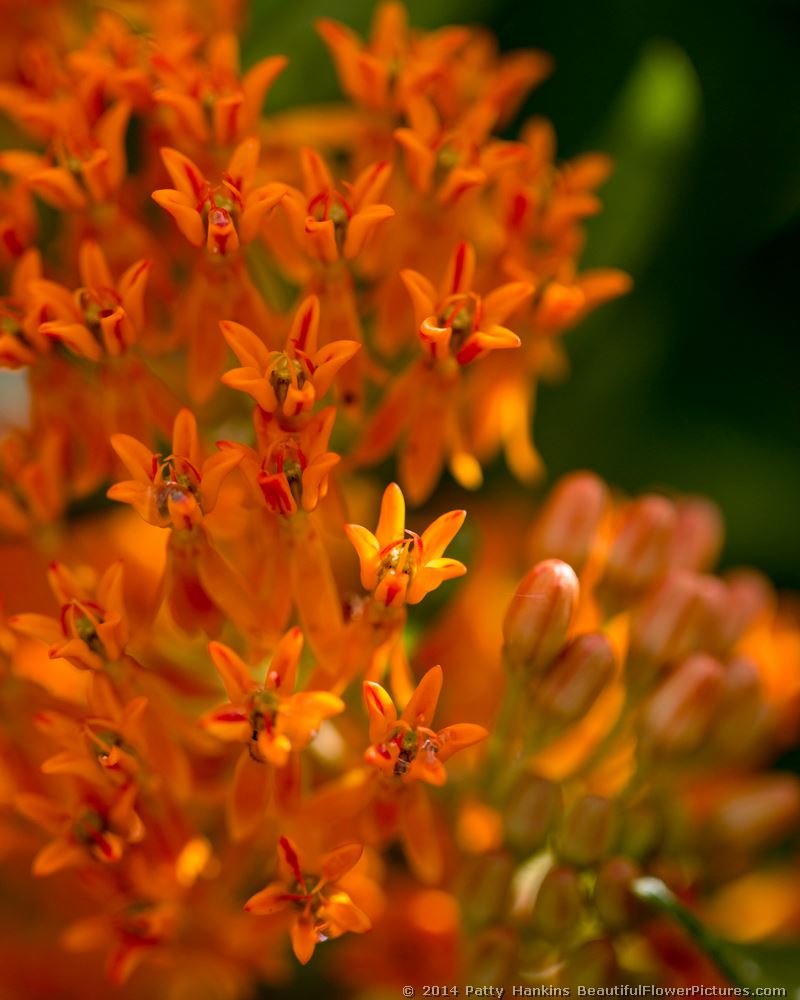
Butterfly Weed © 2014 Patty Hankins
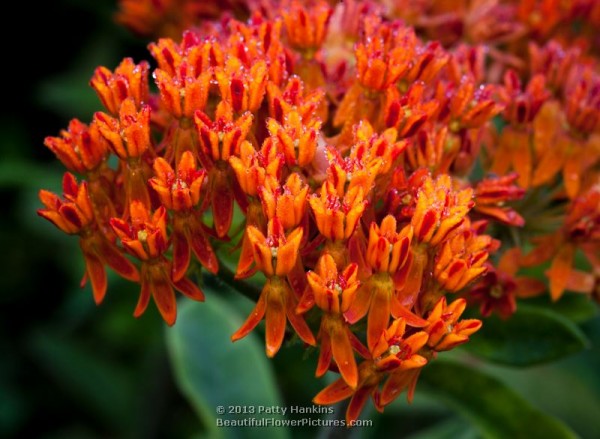
by hankinslawrenceimages | Sep 12, 2013 | Apocynaceae Family, Flowers, Wildflowers
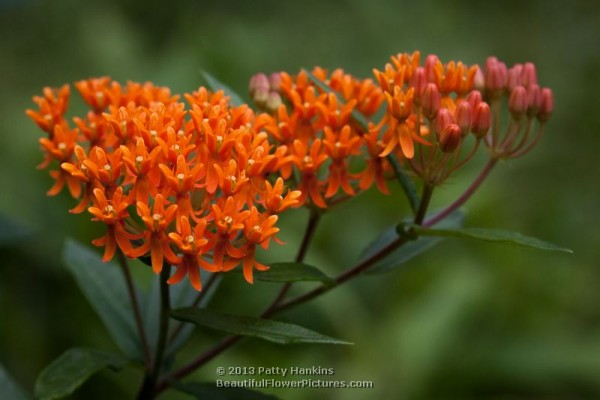
Butterfly Weed © 2013 Patty Hankins
One of my favorite spring & summer blooming wildflowers is Butterfly weed (asclepias tuberosa). I’ve photographed it in several locations – ranging from Maryland to North Carolina to Texas. It’s looks a little different in each location – a different height, slightly different colors on the blossoms, etc – but it’s still the same wonderful plant with bright orange flowers.
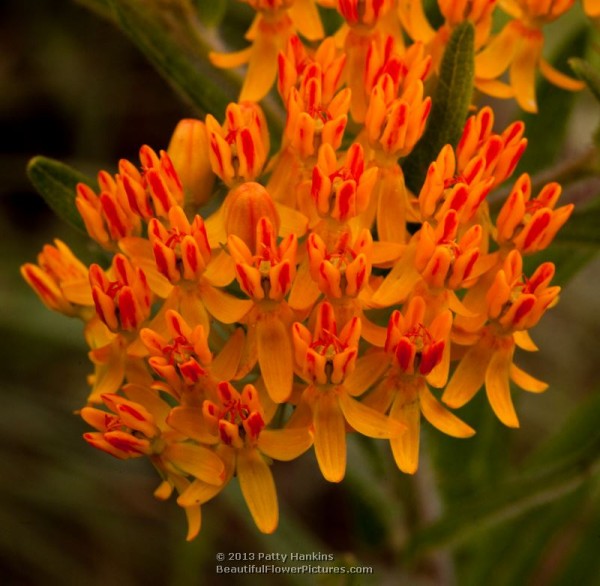
Butterfly Weed © 2013 Patty Hankins
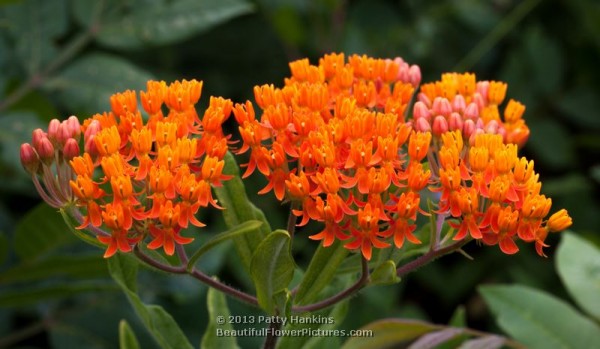
Butterfly Weed © 2013 Patty Hankins
Butterfly weed is native to most of the United States with the exception of northwestern part of the country. Like other members of the milkweed (asclepiadaceae) family, butterfly weed can be identified by it’s flowers. The bright orange to orange/yellow flowers are found in clusters at the tops of the plants.
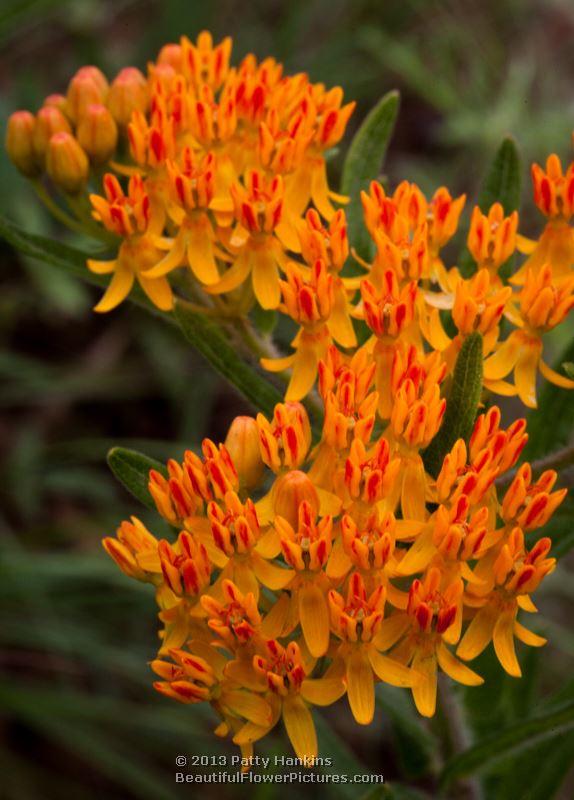
Butterfly Weed © 2013 Patty Hankins
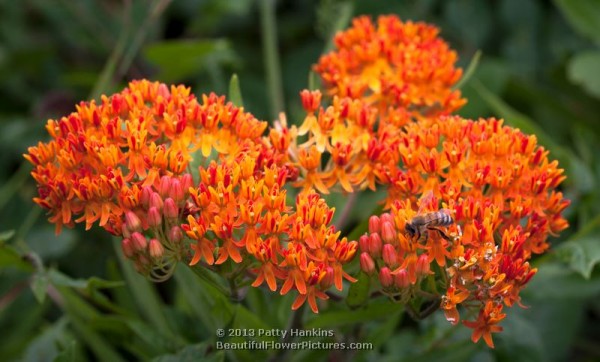
Butterfly Weed © 2013 Patty Hankins
Butterfly weed is a wonderful species to include in a native plant garden. It is a larval host plant for Monarch and Queen butterflies. Several species of bees including native bees are also attracted to the plants. Hummingbirds are also attracted to butterfly weed.
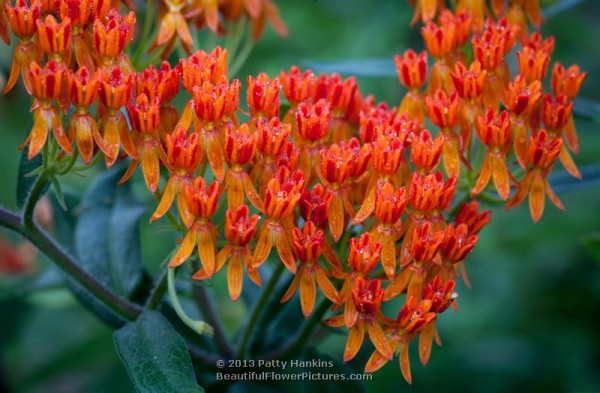
Butterfly Weed © 2013 Patty Hankins
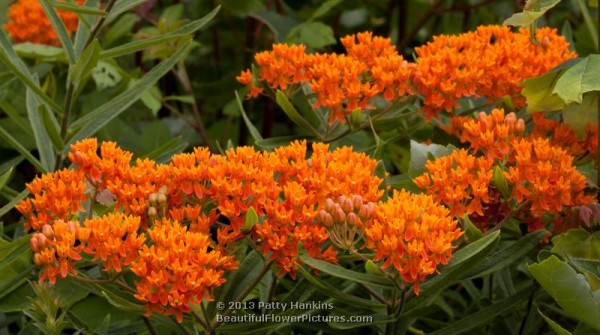
Butterfly Weed © 2013 Patty Hankins
Medicinally, butterfly weed has been used medicinally by several tribes of Native Americans. It was used as a pain killer, an expectorant, a treatment for pleurisy and heart trouble, and given to women after childbirth. It was also used to treat snake, dog and coyote bites.

Butterfly Weed © 2013 Patty Hankins
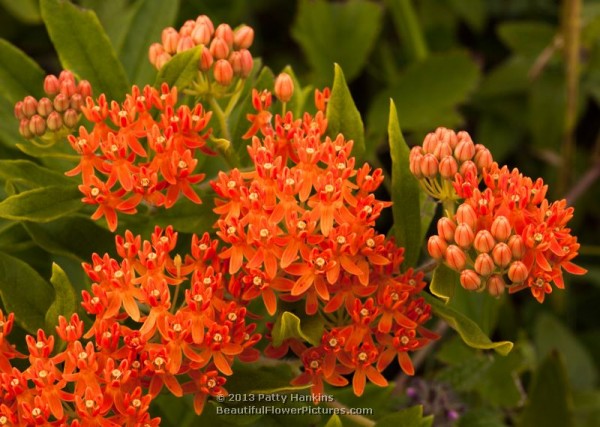
Butterfly Weed © 2013 Patty Hankins
by hankinslawrenceimages | Nov 1, 2012 | Apocynaceae Family, Flowers, Wildflowers
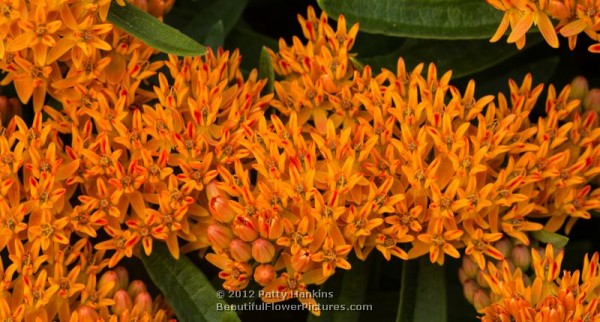 © 2012 Patty Hankins
© 2012 Patty Hankins
One of my favorite spring & summer blooming wildflowers is Butterfly weed (asclepias tuberosa). I’ve photographed it in several locations – ranging from Maryland to Florida to Texas. It’s looks a little different in each location – a different height, slightly different colors on the blossoms, etc – but it’s still the same wonderful plant.
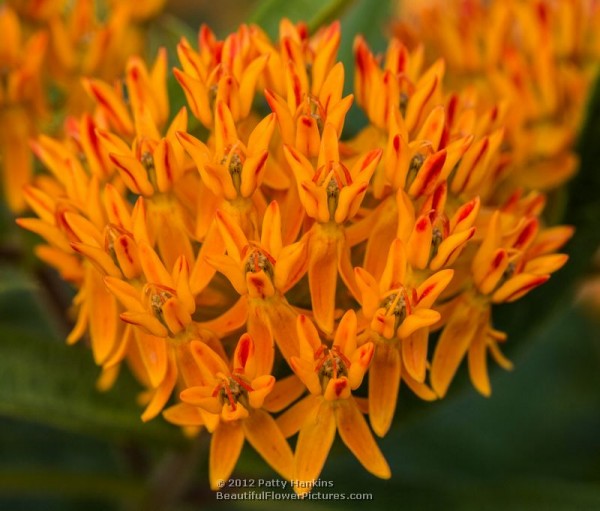
© 2012 Patty Hankins
Butterfly weed is native to most of the United States with the exception of northwestern part of the country. Like other members of the milkweed (asclepiadaceae) family, butterfly weed can be identified by it’s flowers. The bright orange to orange/yellow flowers are found in clusters at the tops of the plants.
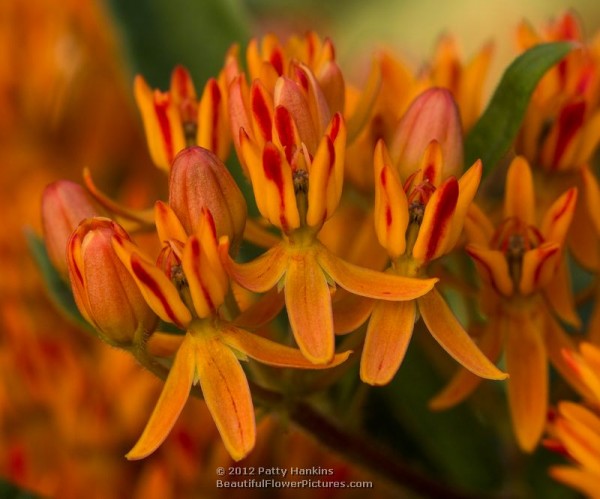
© 2012 Patty Hankins
Butterfly weed is a wonderful species to include in a native plant garden. It is a larval host plant for Monarch and Queen butterflies. Several species of bees including native bees are also attracted to the plants. Hummingbirds are also attracted to butterfly weed.
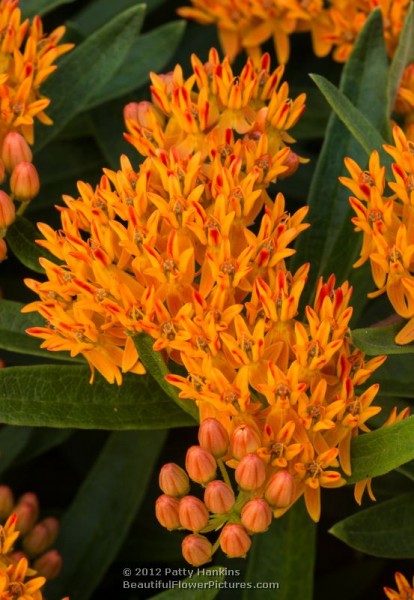
© 2012 Patty Hankins
Medicinally, butterfly weed has been used medicinally by several tribes of Native Americans. It was used as a pain killer, an expectorant, a treatment for pleurisy and heart trouble, and given to women after childbirth. It was also used to treat snake, dog and coyote bites.
More information about Butterfly Weed can be found at
Lady Bird Johnson Wildflower Center
Native American EthnoBotany
USDA Plant Profiles















































